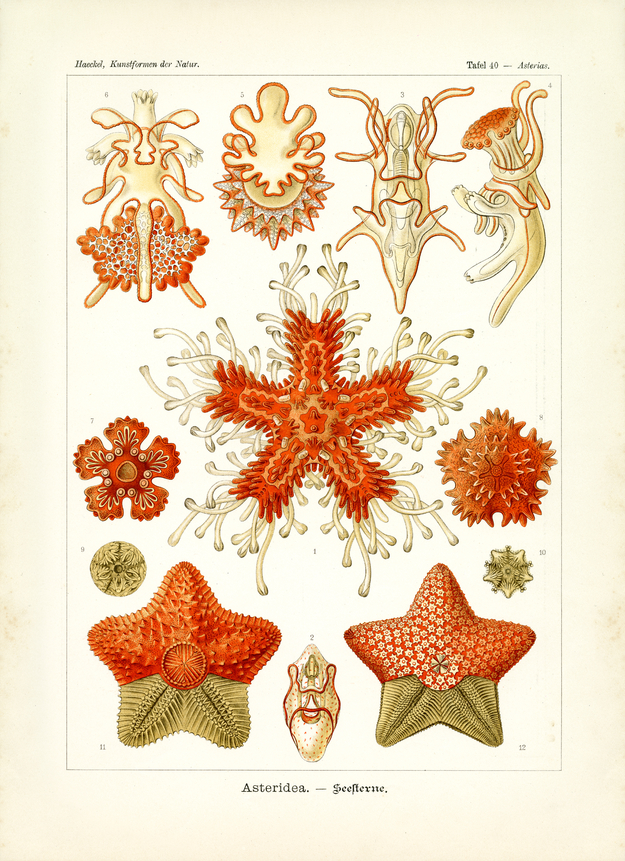Asteridea (Seesterne) are prevalent in two distinct forms like most other Echinoderma. The premature, young animal, Astrolarva (Sternlarve, fig. 2-4) is diminutive, just a few millimeters in size, of bilateral (bilateral symmetrical) basic structure; it’s simple organization is similar to the one of a simple worm, particularly of a Rotatoria (plate 32). Like the latter the Astrolarva swims in the sea with the help of small, vividly moving cilia; cilia are here arranged in long ‘cilia strings’ (coloured in red in fig 2-4). Among the very young Astrolarva (fig. 2) that appear in the shape of a slipper, the cilia cord forms a simple ring with a couple of lateral convexities; it lines the opening of the slipper that corresponds to the ventral side. Later, on both sides along the Astrolarva arm-like extensions develop on which also the cilia cord extends in its full length (Brachiolaria, fig. 3, 4).
The sexually mature Echinoderma (Astrozoon, fig. 11, 12) develops out of the lateral larva through a most peculiar metamorphosis (fig. 5-8); it has a very different, five-radiant body shape and a more developed frame; furthermore, the adult Asteridea is more than hundred times bigger and lives crawling on the ocean floor. The thick skin of the adult Asteridea is heavily calcified and frequently covered with prickles. Only the much smaller part of its inner organs is carried over from the body of the Astrolarva into the Astrozoon during its transformation; the major part of the latter is formed in the process of regeneration.
Translation of the original German introduction by Ernst Haeckel:
Phylum of Echinoderma (Sterntiere); - class of Pentorchonia (Pygocinten); - subclass of Asteridea (Seesterne); - order of Colasteridea.
Translation by VR Translators Bangalore
This is one of the 100 pop science biology illustrations that were published from 1899 – 1904 in Leipzig by Ernst Haeckel through Verlag des Bibliographischen Instituts.
We've scanned the original lithography at 1200dpi on the Epson A3 scanner of A3 scanner huren. You can download a 400dpi JPEG here.
